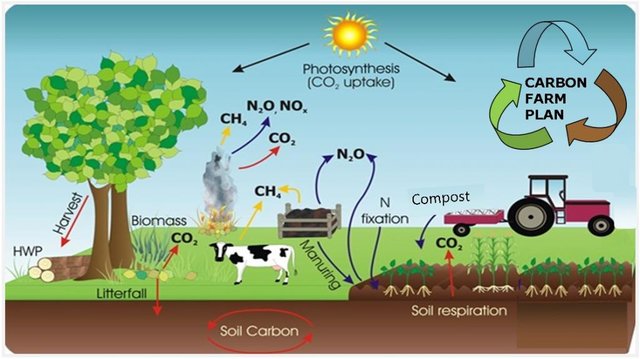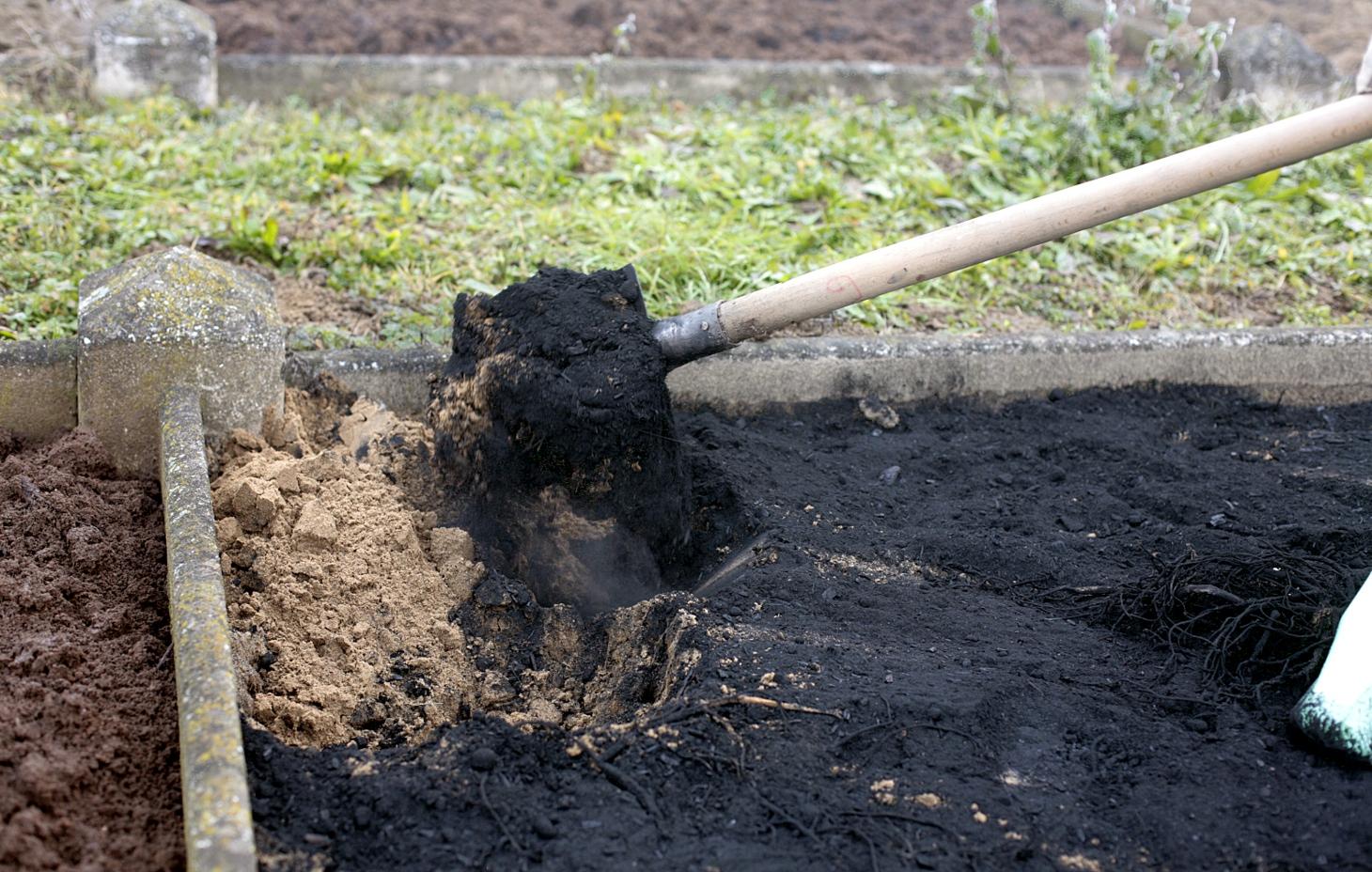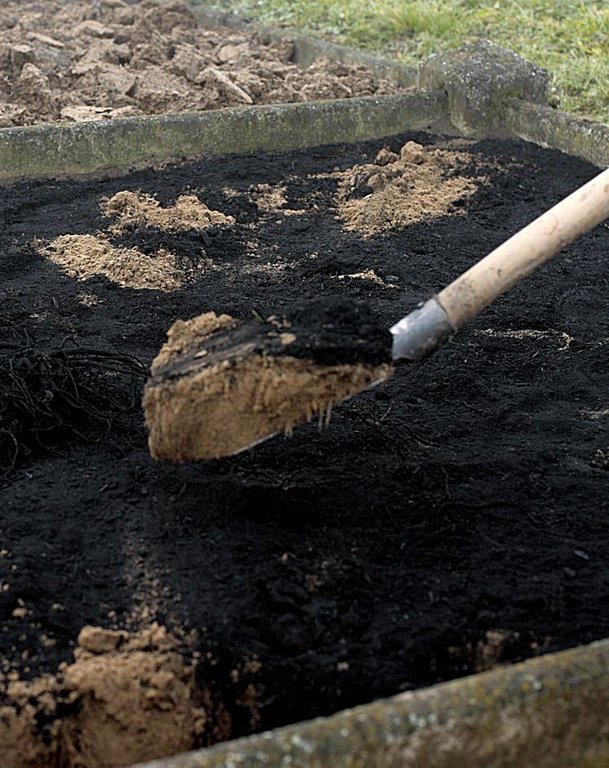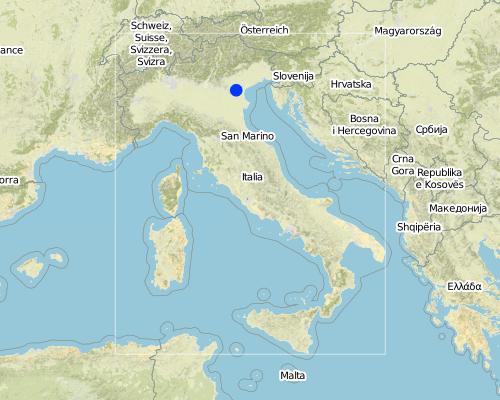Biochar application as a soil amendment [Italy]
- Creation:
- Update:
- Compiler: Nicola Dal Ferro
- Editor: –
- Reviewer: Fabian Ottiger
Applicazione di biochar come ammendante organico
technologies_1279 - Italy
View sections
Expand all Collapse all1. General information
1.2 Contact details of resource persons and institutions involved in the assessment and documentation of the Technology
SLM specialist:
Morari Francesco
francesco.morari@unipd.it
University of Padova
Via 8 Febbraio 1848, 2, 35122 Padova PD, Italy
Italy
Name of project which facilitated the documentation/ evaluation of the Technology (if relevant)
Preventing and Remediating degradation of soils in Europe through Land Care (EU-RECARE )Name of the institution(s) which facilitated the documentation/ evaluation of the Technology (if relevant)
University of Padova (UNIPD) - Italy1.3 Conditions regarding the use of data documented through WOCAT
When were the data compiled (in the field)?
23/04/2015
The compiler and key resource person(s) accept the conditions regarding the use of data documented through WOCAT:
Ja
1.5 Reference to Questionnaire(s) on SLM Approaches

Carbon farming [Italy]
Managing land, water, plants and animals to meet the landscape restoration, climate change and food security.
- Compiler: Nicola Dal Ferro
2. Description of the SLM Technology
2.1 Short description of the Technology
Definition of the Technology:
Application of fine-grained charcoal as an amendment to improve the soil quality and mitigate GHG emissions from croplands
2.2 Detailed description of the Technology
Description:
Biochar is a fine-grained charcoal, rich in refractory organic carbon compounds. Biochar is produced from pyrolysis of plant and waste feedstock, i.e. during thermal decomposition of biomass in partial or total absence of oxygen. As a soil amendment, biochar can favour a long-term stabilisation of carbon stocks, serving as a net withdrawal of atmospheric carbon dioxide. From an agronomic point of view, high organic carbon input from biochar can enhance the nutrient and water retention capacity of the amended soil, reducing the total fertilizer requirements.
Purpose of the Technology: Therefore, the application of biochar is proposed as a strategy to reduce the climate and environmental impact of cropland systems as well as improve the soil quality by enhancing its physical-chemical characteristics.
Establishment / maintenance activities and inputs: Due to high recalcitrance of its C compounds, fine-grained biochar can be applied occasionally in the field, although its long-term effect is still being studied. High doses of biochar can be distributed (e.g. > 10 t C ha-1) just before ploughing in order to favour its incorporation, mixing and interaction with soil particles.
Natural / human environment: Potentially, the high stability of biochar C-compounds favours a reduction of GHG emissions by increasing the soil carbon stocks. Potentially, the soil can benefit from biochar application by improving its structure, the water retention capacity and finally the nutrient cycling. Nevertheless, it must be underlined that such technique is still in its infancy and needs testing before it is widespread as an agricultural practice. Although the biochar costs of production are not available, it must be noted that, due to the occasional application, the management costs would be low.
2.3 Photos of the Technology
2.5 Country/ region/ locations where the Technology has been applied and which are covered by this assessment
Country:
Italy
Region/ State/ Province:
Italy
Further specification of location:
Veneto region
Map
×2.7 Introduction of the Technology
Specify how the Technology was introduced:
- during experiments/ research
3. Classification of the SLM Technology
3.2 Current land use type(s) where the Technology is applied

Cropland
- Annual cropping
Comments:
Major land use problems (compiler’s opinion): Soils in the low Venetian plain of the Veneto region generally suffer from a loss of soil organic matter (SOM) that is strongly affected by their natural texture and climatic conditions. Moreover, in the last 50 years intensive tillage practices contributed to a further SOM decrease estimated at 0.02-0.58 t/ha/y of carbon and high intensive monoculture practices implied oversimplification of agro-ecosystems and decline of soil biodiversity. Finally, in the last few years attention is given to excessive GHG emissions from croplands.
Major land use problems (land users’ perception): Decrease of productivity. However to date, few farmers have adopted conservation practices in order to reduce a decline of soil fertility and water quality, symptom of poor perception of the problem.
3.3 Further information about land use
Water supply for the land on which the Technology is applied:
- mixed rainfed-irrigated
Number of growing seasons per year:
- 1
Specify:
Longest growing period in days: 210Longest growing period from month to month: March to OctoberSecond longest growing period in days: 180
3.4 SLM group to which the Technology belongs
- integrated soil fertility management
3.5 Spread of the Technology
Specify the spread of the Technology:
- evenly spread over an area
If the Technology is evenly spread over an area, indicate approximate area covered:
- < 0.1 km2 (10 ha)
Comments:
This is only a research trial that is now performed at the experimental farm of the University of Padova.
3.6 SLM measures comprising the Technology

agronomic measures
- A2: Organic matter/ soil fertility
Comments:
Main measures: agronomic measures
Type of agronomic measures: manure / compost / residues
3.7 Main types of land degradation addressed by the Technology

chemical soil deterioration
- Cn: fertility decline and reduced organic matter content (not caused by erosion)
Comments:
Main type of degradation addressed: Cn: fertility decline and reduced organic matter content
Main causes of degradation: soil management, crop management (annual, perennial, tree/shrub), population pressure
3.8 Prevention, reduction, or restoration of land degradation
Specify the goal of the Technology with regard to land degradation:
- reduce land degradation
- restore/ rehabilitate severely degraded land
Comments:
Main goals: mitigation / reduction of land degradation, rehabilitation / reclamation of denuded land
Secondary goals: prevention of land degradation
4. Technical specifications, implementation activities, inputs, and costs
4.2 Technical specifications/ explanations of technical drawing
Technical knowledge required for field staff / advisors: moderate
Technical knowledge required for land users: moderate
Main technical functions: increase in organic matter
Secondary technical functions: improvement of topsoil structure (compaction), increase in nutrient availability (supply, recycling,…), increase / maintain water stored in soil
Agronomic measure: Biochar
Material/ species: Plant feedstock
Remarks: 10-40 t C ha-1 still being studied
4.3 General information regarding the calculation of inputs and costs
other/ national currency (specify):
€
Indicate exchange rate from USD to local currency (if relevant): 1 USD =:
0.8
Indicate average wage cost of hired labour per day:
21.00
4.4 Establishment activities
| Activity | Type of measure | Timing | |
|---|---|---|---|
| 1. | Biochar input | Agronomic |
4.5 Costs and inputs needed for establishment
| Specify input | Unit | Quantity | Costs per Unit | Total costs per input | % of costs borne by land users | |
|---|---|---|---|---|---|---|
| Other | Biochar 20t | ha | 1.0 | 6000.0 | 6000.0 | 100.0 |
| Total costs for establishment of the Technology | 6000.0 | |||||
Comments:
Life span of biochar is several years but still under study.
4.7 Costs and inputs needed for maintenance/ recurrent activities (per year)
Comments:
Costs are only indicative at the moment (2015 y) since a real market is not available.
4.8 Most important factors affecting the costs
Describe the most determinate factors affecting the costs:
Currently biochar is difficultly available in the market and some estimates report a high cost (300 US $/ t). However, the application of biochar can be done once every several years. As a result, costs are mainly as an initial investment.
5. Natural and human environment
5.1 Climate
Annual rainfall
- < 250 mm
- 251-500 mm
- 501-750 mm
- 751-1,000 mm
- 1,001-1,500 mm
- 1,501-2,000 mm
- 2,001-3,000 mm
- 3,001-4,000 mm
- > 4,000 mm
Agro-climatic zone
- sub-humid
Thermal climate class: temperate
5.2 Topography
Slopes on average:
- flat (0-2%)
- gentle (3-5%)
- moderate (6-10%)
- rolling (11-15%)
- hilly (16-30%)
- steep (31-60%)
- very steep (>60%)
Landforms:
- plateau/plains
- ridges
- mountain slopes
- hill slopes
- footslopes
- valley floors
Altitudinal zone:
- 0-100 m a.s.l.
- 101-500 m a.s.l.
- 501-1,000 m a.s.l.
- 1,001-1,500 m a.s.l.
- 1,501-2,000 m a.s.l.
- 2,001-2,500 m a.s.l.
- 2,501-3,000 m a.s.l.
- 3,001-4,000 m a.s.l.
- > 4,000 m a.s.l.
5.3 Soils
Soil depth on average:
- very shallow (0-20 cm)
- shallow (21-50 cm)
- moderately deep (51-80 cm)
- deep (81-120 cm)
- very deep (> 120 cm)
Soil texture (topsoil):
- medium (loamy, silty)
Topsoil organic matter:
- medium (1-3%)
If available, attach full soil description or specify the available information, e.g. soil type, soil PH/ acidity, Cation Exchange Capacity, nitrogen, salinity etc.
Soil fertility is low
Soil drainage/infiltration level is medium
Soil water storage capacity is medium
5.4 Water availability and quality
Ground water table:
< 5 m
Availability of surface water:
good
Water quality (untreated):
good drinking water
5.5 Biodiversity
Species diversity:
- medium
5.6 Characteristics of land users applying the Technology
Market orientation of production system:
- commercial/ market
Level of mechanization:
- mechanized/ motorized
Indicate other relevant characteristics of the land users:
Difference in the involvement of women and men: Farmers in the Veneto region are traditionally males due to historical and cultural reasons.
Population density: 200-500 persons/km2
Annual population growth: 0.5% - 1%
5.7 Average area of land owned or leased by land users applying the Technology
- < 0.5 ha
- 0.5-1 ha
- 1-2 ha
- 2-5 ha
- 5-15 ha
- 15-50 ha
- 50-100 ha
- 100-500 ha
- 500-1,000 ha
- 1,000-10,000 ha
- > 10,000 ha
Comments:
Average area of land owned or leased by land users applying the Technology: Also 15-50 ha
5.8 Land ownership, land use rights, and water use rights
Land ownership:
- individual, not titled
- individual, titled
Land use rights:
- leased
- individual
Water use rights:
- communal (organized)
- leased
5.9 Access to services and infrastructure
health:
- poor
- moderate
- good
education:
- poor
- moderate
- good
technical assistance:
- poor
- moderate
- good
employment (e.g. off-farm):
- poor
- moderate
- good
markets:
- poor
- moderate
- good
energy:
- poor
- moderate
- good
roads and transport:
- poor
- moderate
- good
drinking water and sanitation:
- poor
- moderate
- good
financial services:
- poor
- moderate
- good
6. Impacts and concluding statements
6.1 On-site impacts the Technology has shown
Socio-economic impacts
Production
risk of production failure
Income and costs
expenses on agricultural inputs
Socio-cultural impacts
Improved livelihoods and human well-being
Comments/ specify:
So far the technology is in its infancy and improvements in livelihoods and human well-being are still not conceivable
Ecological impacts
Soil
soil moisture
nutrient cycling/ recharge
soil organic matter/ below ground C
Climate and disaster risk reduction
emission of carbon and greenhouse gases
6.2 Off-site impacts the Technology has shown
buffering/ filtering capacity
6.3 Exposure and sensitivity of the Technology to gradual climate change and climate-related extremes/ disasters (as perceived by land users)
Gradual climate change
Gradual climate change
| Season | Type of climatic change/ extreme | How does the Technology cope with it? | |
|---|---|---|---|
| annual temperature | increase | well |
Climate-related extremes (disasters)
Meteorological disasters
| How does the Technology cope with it? | |
|---|---|
| local rainstorm | well |
| local windstorm | well |
Climatological disasters
| How does the Technology cope with it? | |
|---|---|
| drought | well |
Hydrological disasters
| How does the Technology cope with it? | |
|---|---|
| general (river) flood | well |
Other climate-related consequences
Other climate-related consequences
| How does the Technology cope with it? | |
|---|---|
| reduced growing period | well |
6.4 Cost-benefit analysis
Comments:
Short-term and long-term benefits are still being studied, therefore right now it is not possible to evaluate benefits
6.5 Adoption of the Technology
Comments:
There is a little trend towards spontaneous adoption of the Technology
Comments on adoption trend: The technology is not yet applied in the field, although tested and proposed by research institutes in order to imporve soil fertility and soil organic matter content.
6.7 Strengths/ advantages/ opportunities of the Technology
| Strengths/ advantages/ opportunities in the compiler’s or other key resource person’s view |
|---|
| Enhances soil organic carbon content in the long-term |
| Improves soil water retention and nutrient cycling |
| Mitigates GHG emissions of cropland systems |
6.8 Weaknesses/ disadvantages/ risks of the Technology and ways of overcoming them
| Weaknesses/ disadvantages/ risks in the compiler’s or other key resource person’s view | How can they be overcome? |
|---|---|
| Still not completely known the long-term effects on soil properties and biodiversity |
7. References and links
7.2 References to available publications
Title, author, year, ISBN:
Physico-chemical properties and microbial responses in biochar-amended soils: Mechanisms and future directions, Gul et al., 2015. Agriculture, Ecosystems & Environment (206), 46-59.
Links and modules
Expand all Collapse allLinks

Carbon farming [Italy]
Managing land, water, plants and animals to meet the landscape restoration, climate change and food security.
- Compiler: Nicola Dal Ferro
Modules
No modules





